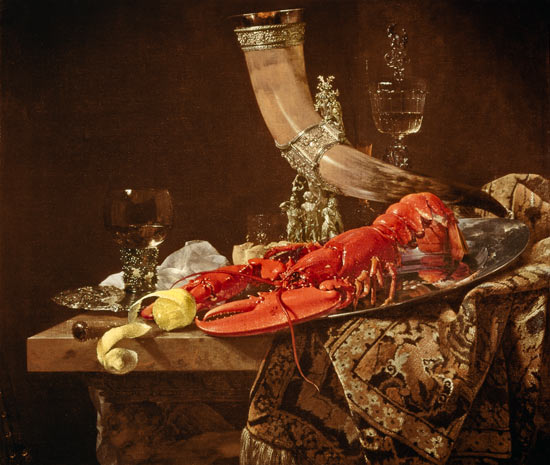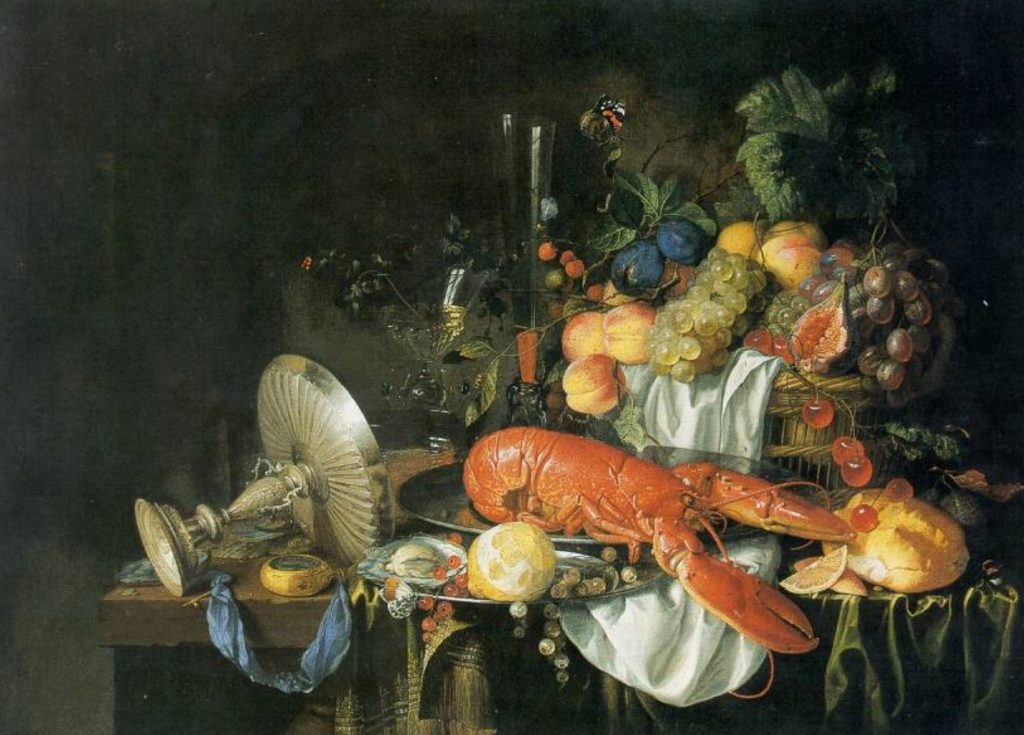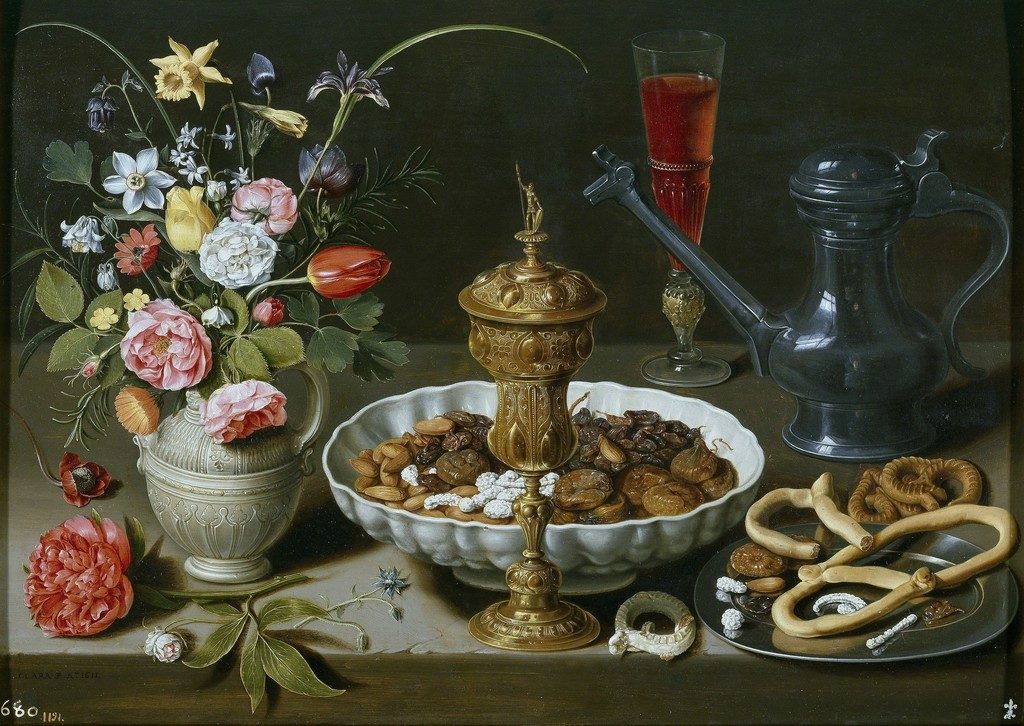Still life paintings were one of the most popular genres of the 17th century and have only grown in popularity since. The sheer amount of still life paintings produced in the Low Countries (present-day Netherlands, Belgium, etc.) numbers to hundreds of thousands, with many still uncatalogued.
Why so many? In addition to serving a quasi-religious purpose of reminding their owners that all is fleeting, still life paintings were a way to display one’s wealth. The boom of still lifes increased during the age of explorations. Patrons could hire painters to create extravagant tableaux featuring exotic foods and goods.

Take Willem Kalf’s 1653 Still Life with the Drinking-horn of the Saint Sebastian Archer’ Guild, Lobster and Glasses, for example. It features a lobster, citrus fruit, fine china, and foreign textiles, along with the guild’s fancy drinking-horn. All the goods are imported and scream wealth–the members of the guild surely paid a pretty penny for their citrus, fresh lobster (both uncommon to the diet of a 17th-century Netherlander), and extravagant china. A painting like this would surely make many people realize the wealth of those in this guild, and probably incited a fair amount of envy (think of it like this: wouldn’t you want to be part of the social club with the best food?).
Nina Strochlic of National Geographic reminds us that this concept isn’t exactly foreign. In her article Artists, not Instagram, Set the Table for Food Porn, she points out the similarities between extravagant still life paintings and today’s over-the-top #foodstagrams. Referencing a 2016 study by Cornell University’s Food and Brand Lab titled “Food Art Does Not Reflect Reality,” Strochlic compares the two trends. Both aren’t solely to display the owner’s love of food, they’re also meant to aggrandize.

Think of all the carefully-crafted food pictures of Instagram: there are entire accounts dedicated to food travels, where users can display the fact that they have the opportunity to and can afford to travel solely for the gram. And if you think snapping the perfect food shot doesn’t have its fair share of styling, think again–there are entire workshops dedicated to how to style the perfect #foodstagram. Extravagant still lifes are in many ways their predecessors.

What do you think? Do you see any similarities between Instagramming your food and over-the-top still life paintings? Share your thoughts in the comments!
Read more about still life paintings at Nina Strochlic’s National Geographic article.
Want more fun art reads? Visit our past blog posts for more!







